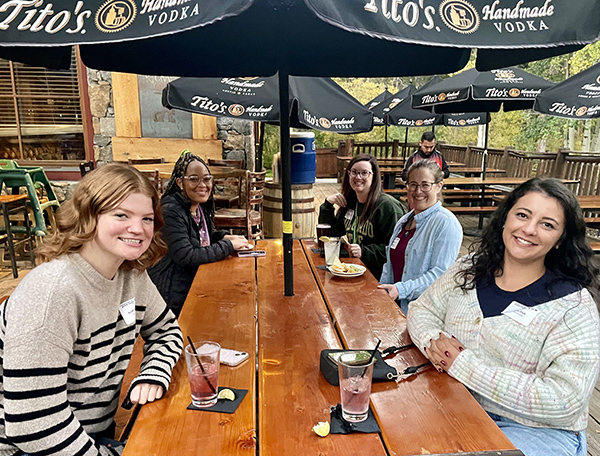Lindsey Harr, PA-C, started attending ECHOs in 2020 when she joined Adolescent Reproductive Health in Primary Care (ARH). In the same month COVID hit and she was one of the hundreds of Colorado health care providers who joined the three-times-weekly COVID-19 Just-in-Time ECHO for Primary Care. As of today, Lindsey, a family medicine physician assistant in Craig, Colorado, has attended 12 ECHOs, which she says has enabled her to continue to learn more about topics that can impact her patient care on a daily basis.
Craig has a population of 9,000 and lies in Moffat County, a frontier county that is home to Memorial Regional Health (MRH) where Lindsey has worked for the past two years. MRH is a vital lifeline to health care services in an underserved corner of the state. As a rural family medicine PA, Lindsey has only one or two choices of local specialists who often have lengthy wait times. She loves that she can gain knowledge from specialists via ECHO, which enables her to begin appropriate care while patients await further care. Lindsey has also attended ECHOs on rheumatology, pediatric psychiatry, urology, endocrinology and breastfeeding, all serving to grow her knowledge around caring for patients in her daily practice.
ECHO Colorado together with the Colorado Department of Health Care Policy & Financing (HCPF) has a focus on improving reach to rural and frontier providers like Lindsey. Currently 22 percent of ECHO participants are from rural/frontier counties. ECHO is working with HCPF on an engagement strategy for 2025 that will increase reach and ultimately access to care for rural and frontier residents. The two organizations are also developing creative ways to use data to better understand gaps in participant reach.
Lindsey decided to become a PA because she was passionate about caring for those who do not have easy access to health care. She especially loves caring for women and appreciates the ongoing ARH Clinical Pearls –an extension of the ARH ECHO providing regular updates and new evidence about ARH that she uses in her practice several times a week.
“ECHO is a wonderful platform to reach health care providers who are eager to grow their knowledge to better serve their patients,” said Lindsey. “I recommend ECHO to all the students I work with and to fellow providers on a regular basis!”





